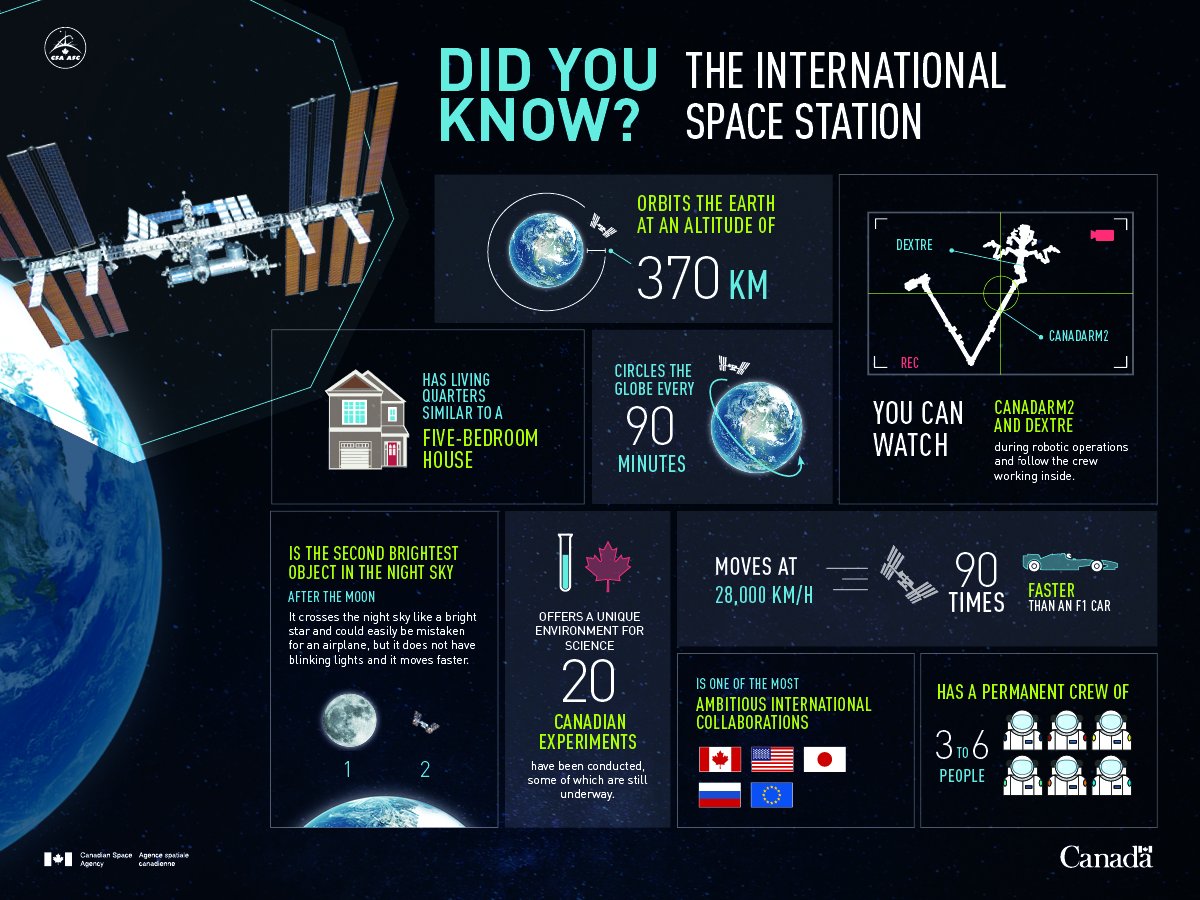

The space station is nearly 4 times bigger than the Russian space station Mir and about 5 times as large as the U.S. The ISS has 2 bathrooms, a gym and more room than a 6 bedroom house. The space station weighs nearly 925,000 pounds (419,500 kg's). It is 357 ft (109 m) in length, making the space station's area span about the size of an American football field. The ISS is now the largest artificial body in orbit. The Unity module was equipped with all the requirements for long-term human living. Two weeks later, NASA launched a module called Unity aboard Space Shuttle Endeavour, successfully attaching it to the Zarya module. Zarya provided propulsion, attitude control, communications and electrical power. It was launched into space on a Russian Proton rocket on November 20th, 1998. The first part of the ISS sent to space was the module called Zarya. The ISS comprises pressurised modules for astronauts to live in, external trusses for propulsion, solar arrays for power and many other amazing components. We hope that further space stations will be developed to continue in research and development of space science.The International Space Station (ISS) is a habitable human-made satellite that orbits Earth at an altitude of between 330 km (205mi) and 435 km (270 mi). The International Space Station has nearly completed its mission to serve as a space laboratory.

They are looking instead to the private sector to develop commercial facilities that NASA could utilize in the future. NASA officials have recently indicated that it is unlikely that NASA would finance a replacement space station once the ISS is retired. This vehicle will be equipped with enough fuel to push the station into a planned re-entry, most likely over the Pacific Ocean.

Most likely, they will send up one of the European Space Agency’s Automated Transfer Vehicles. If it crashes to Earth, allowing that it survives re-entry, it may threaten people. It could produce a lot of junk.” Such debris could either remain in orbit, presenting a threat to future satellites and spacecraft. “It can’t be left in orbit because it’s too complex and heavy. “After the ISS completes its mission, we’ll have to sink it,” The 420-ton ISS presents a major threat if its orbit is allowed to deteriorate unmanaged. WHAT WILL HAPPEN TO THE ISS WHEN IT IS DECOMMISSIONED? The American Section of the ISS is funded through 2024. Astronauts use a suction device to get rid of the waste water. However, due to weightlessness, the water droplets and soap don’t flow downwards into a drain, they float about. They then get themselves wet and wash up just like you would on Earth. When astronauts want to take a shower, they step into a cylindrical shower stall and close the door.
#Facts about the international space station full#
The space station has a full body shower unit. But astronauts do have to exercise frequently to prevent muscle atrophy. Of course, the temperature-controlled atmosphere of the ISS is much cleaner than Earth’s, and the lack of gravity means clothes don’t stick to their bodies as much. ISS astronauts are instructed to wear their underwear for up to a week before changing to a clean pair. The ISS missions, called expeditions, usually last about six months.Īstronauts aboard the ISS incinerate their dirty laundry through atmospheric reentry.

HOW LONG DO THE ASTRONAUTS STAY ON THE ISS? It is permanently manned at a level of three. And when Russian ship goes up, usually there are two people aboard, so there are either three, five or ten people on the station. When the shuttle goes up, it carries up to seven additional people so they can have as many as ten at a time when the shuttle is there. There are three people permanently on the station, and the crew that rotates out periodically. The International Space Station is a co-operative program between Europe, the United States, Russia, Canada, and Japan for the joint development, operation and utilization of a permanently inhabited Space Station in low Earth orbit ASTRONAUTS ON THE ISS On a clear day, the ISS is easily visible to the naked eye from the ground. The average distance in miles above Earth’s surface the ISS orbits is 250 kilometers. The ISS is prograde meaning it travels in the direction of the Earth’s rotation. This means that the Space Station orbits Earth (and sees a sunrise) once every 92 minutes! It Orbits the Earth 16 Times a Day. The International Space Station travels in orbit around Earth at a speed of roughly 17,150 miles per hour (that’s about 5 miles per second!). INTERNATIONAL SPACE STATION SPEED AND ORBIT


 0 kommentar(er)
0 kommentar(er)
